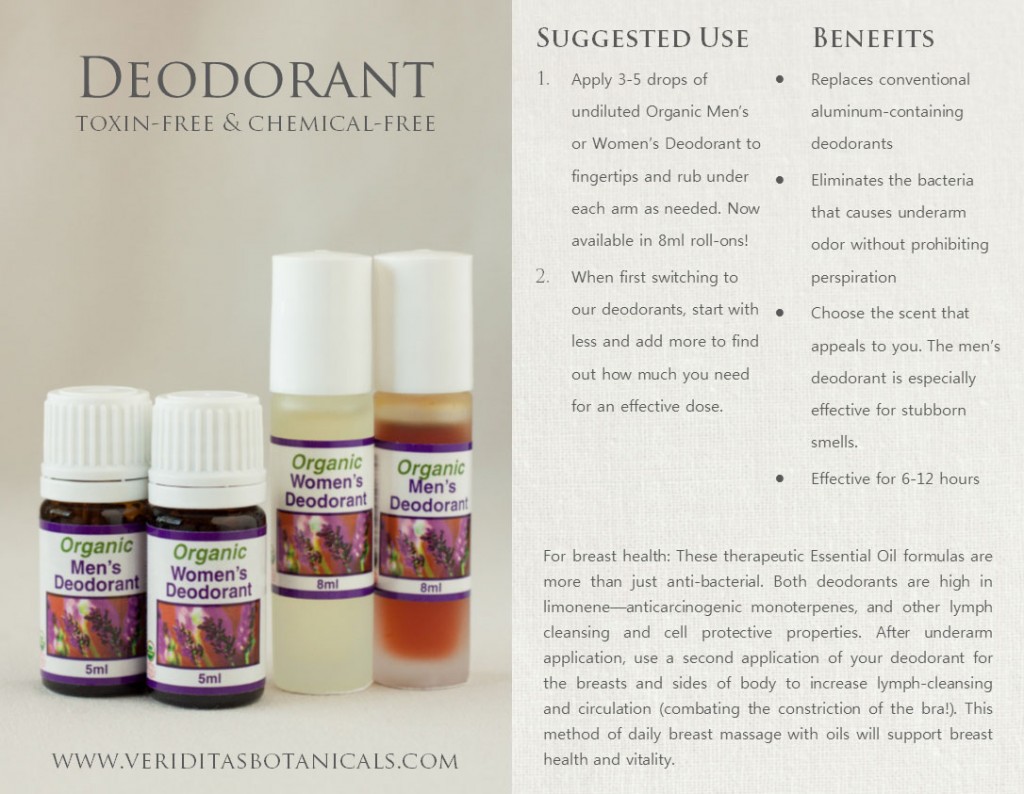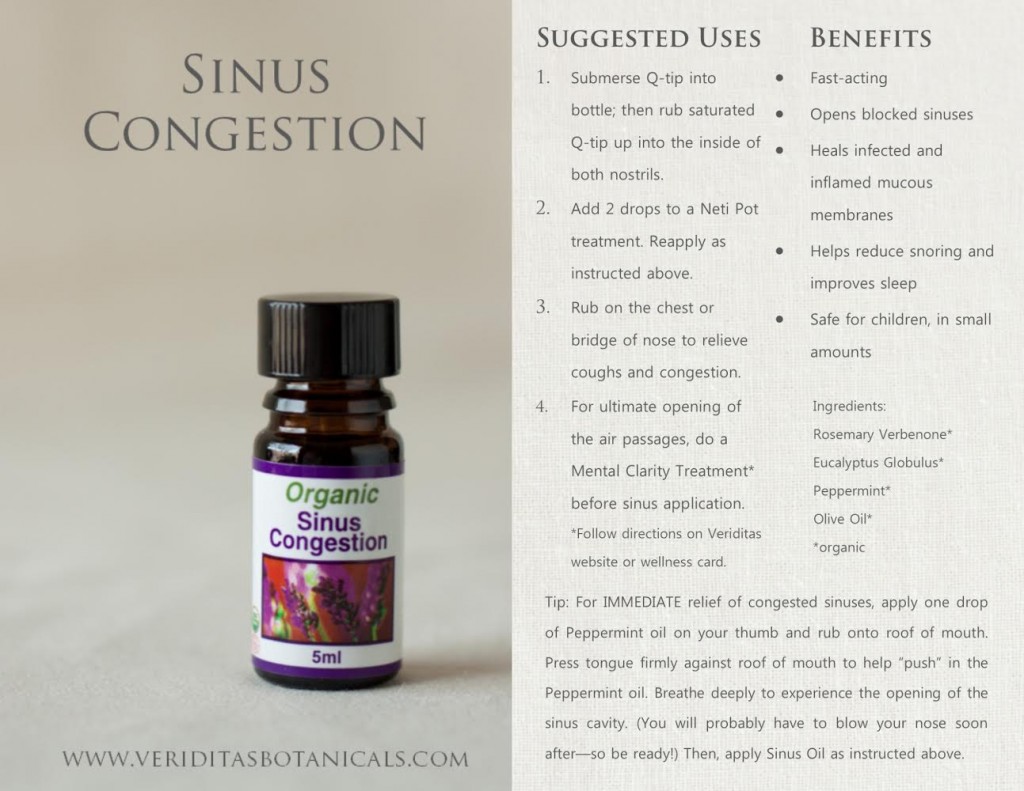Using Essential Oils Internally – By Melissa Farris
When it comes to the internal use of essential oils, purity is crucial. Like wines, the quality of essential oils varies greatly. Just as there are commodity wines filled with additives and preservatives, there are commodity essential oils, which often contain synthetics or other additives to “extend” the oil. Unlike in wines, however, these oil additives and synthetics may not be safe for the human body to ingest. Most essential oils sold by our domestic competitors contain varying levels of these impurities and are unsafe for ingestion. Veriditas, however, offers only 100% pure ECOCERT certified organic essential oils, expertly distilled from organically grown plants.
Essential oils are extremely concentrated. One drop of lavender equals one cup of lavender flowers. Thirty rose blossoms go into every drop of Rose essential oil. The math is staggering. There are an estimated 5.5 million roses in one liter of organic rose oil! This amounts to $18,000 per liter. That is a heck of a lot more than a bottle of wine. So, as you can see, each drop of an essential oil represents so much landmass! And if you are caring for that land and your body by buying true organic oils, your body and the earth will thank you.
Essential oils are all around us
We ingest essential oils all of the time, often without even knowing it. Ever heard of an Altoid? There are two drops of peppermint essential oil per mint. That’s the secret to what makes them “curiously strong.”
Extracts purchased in your average grocery store are mixtures of essential oils and alcohol. This includes all of the most common flavors: peppermint, clove, vanilla, and cinnamon.
Many foods and beverages derive their signature scents and flavors from essential oils. For example, the complex flavor in Coca Cola, one of the most legendary secrets in the food industry, is derived from essential oils.
But it’s not just the food industry that can use these flavorful oils. With a little know-how, you can use essential oils to create winning recipes (cardamom cookies), brighten up water and cocktails (citrus & mints), and even soothe a sore throat (cypress).
Useful guidelines
The following recommendations apply only to Veriditas ECOCERT organic essential oils. We cannot vouch for the quality of other companies’ essential oils. As mentioned, most brands on the American market should never be taken internally, as many contain pesticide residues and are not 100% pure, certified organic oils.
With this in mind, the recommended amount for internal use depends on which essential oil you’re using and its quality. The best rule of thumb, however, is to START WITH ONE DROP. You can always add more to taste, or as needed.
Each of the Veriditas oils below may be mixed with the following “carriers” for ingestion: 2 oz. water/juice, 1 tsp. honey, 1 sugar cube, or 1 tsp. olive oil.
Safe Guidelines for Daily Drops
1-10 drops per day: Grapefruit, Lemon, Orange
1-5 drops per day: Lavender, Peppermint, Tea Tree
1-2 drops per day: Anise, Basil, Bergamot, Cardamom, Cinnamon Bark, Cocoa in Jojoba, Cypress, Eucalyptus Radiata, Fennel, Rose Geranium, Good Samaritan, Jasmine Absolute, Jasmine in Jojoba, Lavender Reserve, Lemon Verbena, Lemongrass, Lime, Neroli, Oregano, Pine, Ravintsara, Rose Absolute, Rose in Jojoba, Rose Otto, White Rose, Rosemary Cineol, Spearmint, Thyme Linalol, Thyme Thymol, Vanilla in Jojoba, Ylang Ylang
Essential oils NOT RECOMENDED for internal use:
Atlas Cedar, Blue Chamomile, German Chamomile, Carrot Seed, Cinnamon leaf, Cistus, Douglas Fir, Eucalyptus Citriodora, Eucalyptus Globulus, Helichrysum, Lavender Absolute, MQV, Mugwort, Patchouli, Rosemary Verbenone, Sage, Spikenard, Vetiver, Wintergreen.
Cooking Recommendations
Start by adding one drop of essential oil for a recipe that serves four. Add additional drops for taste, usually up to six. Always add essential oils at the end of cooking to limit heat exposure, which can damage the molecular structure and potency of the oils. For example, add 3 drops of Basil and 1 drop of Thyme oil to a 4-serving pasta sauce at the end, right before serving.
Get creative! Try 1 drop for these ideas –
- Peppermint makes a minty mocha or hot chocolate
- Anise works well in biscotti and ouzo.
- Basil is a great addition to olive oil salad dressings or egg dishes.
- You can make your own Earl Grey tea with bergamot.
- Cardamom tastes delicious in coffee drinks and Homemade chocolate.
- A drop of Rose Otto in 1 glass of champagne is out of this world!
- Homemade Truffels with any oil! We have made
- Cardamom, Rose otto, Neroli, Basil, Lemon, Lavender, Coffee, Ylang Ylang, Bergamot, Cinnomon Bark & Fennel. Each has their own flare, but they are all Magical!
Explore the list above and see what sparks your imagination. Cooking with oils is great fun. They add tremendous flavor, as well as aid in digestion. Armed with a little knowledge and a lot of creativity, your taste buds and digestion will notice the difference.
We encourage you to learn more about the science behind essential oils: download the chart above of oils categorized by functional group and primary constituents.
For more information, we suggest Advanced Aromatherapy by Kurt Schnaubelt, PhD or any of Kurt’s books for a strong foundation in Aromatheraphy.
These Veriditas essential oils are listed on the GRAS list of the FDA.
“GRAS” is an acronym for the phrase Generally Recognized As Safe. Under sections 201(s) and 409 of the Federal Food, Drug, and Cosmetic Act (the Act), any substance that is intentionally added to food is a food additive, that is subject to premarket review and approval by FDA, unless the substance is generally recognized, among qualified experts, as having been adequately shown to be safe under the conditions of its intended use, or unless the use of the substance is otherwise excluded from the definition of a food additive.
The following Veriditas essential oils are labeled without “external use only” printed on them implying that you can use these particular oils in food preparations, cooking/baking, medicinal preparations: such as medicinal honeys, cough syrups, tinctures, flower essences etc.
Please note these oils are only recommended for their INTENDED USE as a food additive, as the FDA only allows such approval and does not approve any essential oils or herbs to be used for disease or treating heath conditions. Therefore, Veriditas cannot make claims that essential oils have any health benefits.
Anise
Basil
Bergamot
Cardamom
Cinnamon Bark
Cocoa in jojoba
Cypress
Eucalyptus radiata
Fennel
Grapefruit
Jasmine absolute
Jasmine in jojoba
Lavender
Lavender reserve
Lemon
Lemon verbena
Lemongrass
Lime
Neroli
Orange
Oregano
Peppermint
Pine, wild scotch
Ravintsara
Rose absolute
Rose geranium
Rose in jojoba
Rose otto
Rare white rose
Rosemary cineol
Spearmint
Tea tree
Thyme linalol
Thyme thymol
Vanilla in jojoba
Ylang ylang


For Every Room in Your Home:
Meditation/Prayer room
Frankincense Sandalwood
Myrrh
Atlas cedar
Citruses / sage to “cleanse”
Mints to uplift/ awaken
Office
Mental Clarity
Citruses
Mints – read peppermint handout!
Dining room
Anise
Basil
Clove
Cinnamon Bar
Good Samaritan
Vanilla – use your imagination… things that make you hungry or your mouth water!
Bedroom
Linen Sprays: ylang ylang or lavender
Rose geranium
lemon or orange
(Use something that says, “relax” to you)
Closet / drawers/ lingerie drawer
Lavender – make a sachet of Cedar/lavender
Mold – Good Samaritan or thyme, tea tree and lemon
Find a sweet smell that you would like your clothes to smell like
Distillation PowerPoint
Lavender Presentation PowerPoint
Misconceptions PowerPoint
**HOW TO MAKE YOUR OWN “OREGANO OIL**
Oregano Oil :
WHAT YOU NEED:
1ounce dropper bottle
organic extra virgin olive oil
veriditas oregano oil – 67% carvacrol (the active constituent)what you do:
drop 30 drops of oregano oil into 1oz bottle
fill 1oz bottle with olive oil (leave room for dropper)
shaketake 20-30 drops of mixture1- 3 times per day
for children under 12 – 5-10 drops
This is for times when you are feeling like you are getting sick or you are sick. Not for ongoing consumption.
Traditional Perfume
Step 1
Mix 25 – 50 drops (total) of your favorite essential oils. (Try top, middle, and base note blending)
Lavender is used to synergize a blend, tying all of the notes together to create a balance.
Try adding 1 – 5 drops of lavender to synergize all of the oils after you have completed your blend.
Step 2
Add 2 1/2 ounces of *alcohol
Shake and let sit 2 days to 6 weeks for maturity
(The scent will intensify and change)
Step 3
Add 2 TBSP (30ml) of distilled water. Shake again and bottle your finished perfume.
Use Ever clear or vodka never use isopropyl/Rubbing alcohol. It is toxic and smells horrible!
Perfumed Oil (Alcohol-Free)
Step 1
Same as Traditional Perfume
Step 2
Same as Traditional Perfume
Step 3
Add 3 ounces of **Jojoba oil to essential oils
Do not add water after you have completed your perfume.
**Jojoba oil is a liquid wax similar to your natural skin’s sebum. It is a wonderful “fixative” fatty oil and is the best choice for a “perfumery base” with essential oils.
Blending Basics: Top, Middle and Base Notes
Creating your own fragrance is a playful art. There are no real rules as to which oils blend well together, so feel free to experiment. But only use organic essential oils.
Start by mixing no mare than 2 – 5 oils per blend, blending drop by drop. Working in a warm room will enhance the aromatic qualities of the oils.
Most professional fragrances are composed of a balance of top middle and base notes. These three categories are based on evaporation rates. Once again, there is no hard and fast rule about which oils belong in which category or how much of each to use…. So it is up to your nose and your intuition. This is the art of blending fragrant oils!
-Top notes (5% to 20% of the blend) – have the fastest evaporation rates. These are sharp, penetrating scents that you notice first when you smell a blend. They include citrus, needle oils, eucalyptuses and mints. In general, top notes are considered stimulating and refreshing.
-Middle notes (50% to 80%) – are soft and have balanced and usually make up the majority of a blend. They include oils like roman chamomile, lavender, geranium, palmarosa, petitgrain, and clary sage. Middle notes are considered harmonizing.
-Base notes (5% to 20%) – having the lowest evaporation rates, base notes are deep and heavy and are used in blends as fixatives. Many are resins, gums or woods and they may be quite viscous (thick). Base notes, which are considered relaxing, include angelica, benzoin, balsams, myrrh, spikenard, patchouli, vetiver, jasmine and ylang.
Be sure to keep detailed notes and label of your blends so that you can reproduce your successes or adjust blends that do not satisfy you. Keep in mind that essential oils tend to vary from crop to crop, so a reproduction of a blend may differ slightly from your original.
Prepared by, Melissa Farris 2006
























